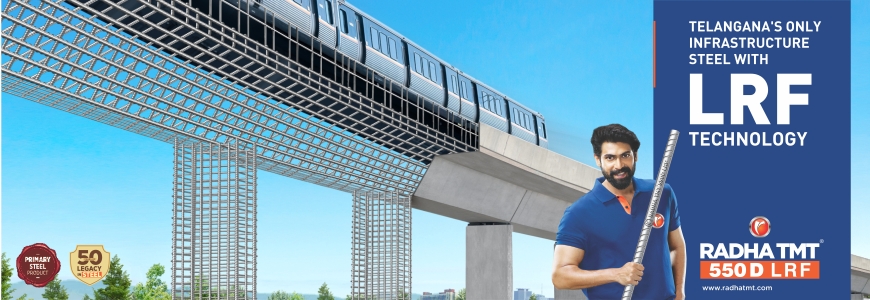What is ductility in TMT steel bars

Ductility is a characteristic of some metals, and even non-metals. Materials that possess this feature can be drawn into elongated bars when necessary, with a certain amount of force, without fracture. It is therefore an indication of how malleable the material is; it is the measure of material deformation under a tensile stress, and it says volumes about how it can be shaped into different forms, for use in different industries. Ductility of any material is dependent on its chemical composition (identity and number of chemical elements), crystalline structure (structure of ions, molecules or atoms held together in a three dimensional arrangement) and temperature at which this property is being measured. The ductility of iron is high.
The ductility of steel depends on the types and levels of alloying elements present. For example, an increase in carbon will increase the strength of the steel, but reduce the metal’s ductility. TMT steel bars strive to achieve the ideal combination.
Why the construction industry needs ductile materials: A ductile material therefore has a multitude of uses in the development of infrastructure ranging from manufacturing applications, to construction. This makes ductile steel bars absolutely vital in nation building - especially in countries such as ours that is on the road to building world class infrastructure that is long lasting and safe. These robust, ductile steel bars are ideal for use in regions which have been witnessing severe natural calamities with increasing regularity in recent times. Materials are in fact chosen in construction because of their ductility. This is because, in addition to being able to be drawn into wires and bars, these materials show such immense strength, that even under severe pressure, they do not break, and are able to absorb shock and mechanical overload - making them invaluable to developing infrastructure across the globe that is resistant to earthquakes, floods, and other natural calamities. They can stretch under pressure with no alteration to their overall quality. Best quality TMT Steel Bars Ductility in TMT Steel Bars is more important because it determines how much it can bend as per the construction requirement. It is important that it is one of the most important factors to consider, before choosing to buy best quality TMT steel Bars. The best quality Fe 550D TMT Steel bars, for this reason, are preferred in the construction of critical infrastructure such as bridges, tunnels, dams, power facilities, hospitals, ports, roads, airports, malls, skyscrapers, apartment complexes and even stadiums.
Why are TMT Steels Bars ductile? Fe, is the universal symbol of iron, which is the primary metal used in the manufacturing of the Fe 550D TMT bars; the number 550 refers to the minimum yield stress, that is to say, the minimum force per mm2 required to produce a total elongation of 0.5%; and the letter D represents its ductility. In a sense this implies that the TMT steel bars that are of the grade 550D have a greater percentage of tensile strength and elongation than others. Fe 550D TMT bars are ductile because they are manufactured through a process where they are Thermo Mechanically Treated. At first, the primary material - iron ore is passed through several furnaces and liquefied in order to get rid of even trace amounts of impurities, as they can otherwise alter the overall quality of the bars. Once this is done the molten steel is cooled immediately in a water-cooled mold. The TMT process then begins with the solidifying bars being put through the ‘quenching’ process, as they undergo a “Thermex” water spraying system to create a hard outside, with a soft inner core. This ensures the ductility of the bars. The bars are then put through a self-tempering process as the heat from the inner cores of the bars is allowed to flow to the harder outer layer, causing “tempering” of the outside. Page 1 of 2 Finally, the bars are allowed to rest on a cooling bed at normal temperature. Through this process, the inner core forms a ferrite-pearlite structure that is softer and easier to use. Thus, the final structure of the TMT bar is formed, with a strong outer layer and a ductile inner core. This entire TMT process is performed in order to increase the ductility of the bars and their overall tensile strength which makes them so strong, yet easy to utilize in the development of infrastructure.
Radha TMT’s ductile 550D LRF steel bars which are embedded in these concrete frameworks not only help the structures to support their weight but also resist earthquakes. The Hyderabad based Radha Smelters (GST Number: 36AADCR6508A1ZQ), a leading manufacturer of TMT steel bars has launched the first of its kind 550 D LRF (Ladle Refining Furnace). The Thermo Mechanically Treated (TMT) Bars produced through the LRF route is a superior grade steel bar with high ductility and has been introduced for the first time in Telangana. With this new product launch and world class manufacturing capabilities, Radha TMT joins the elite group of steel producing companies like SAIL, JSPL, JSW and TATA Steel producing Radha 550D LRF Steel Bars.

